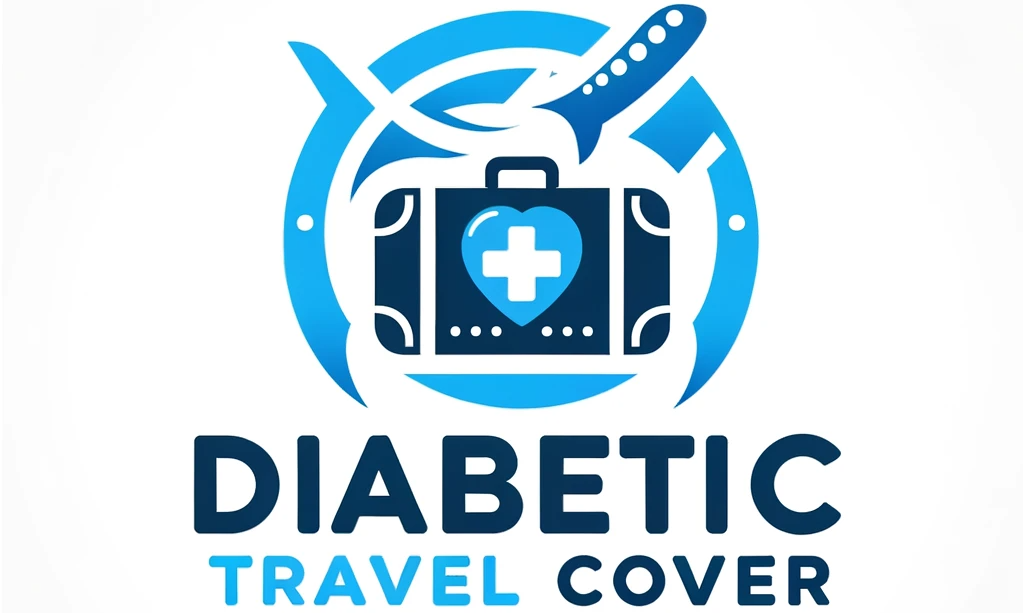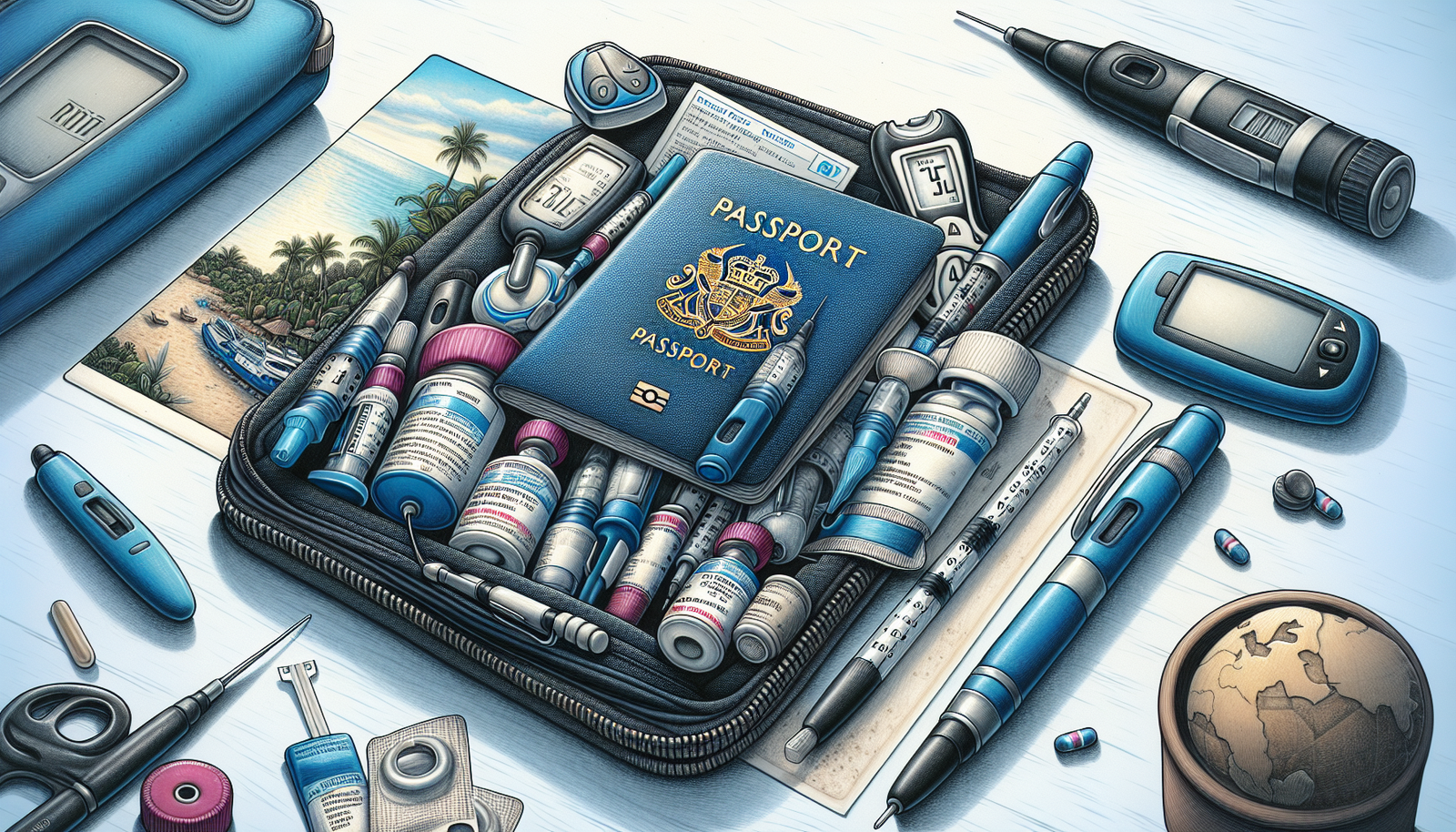Are you a diabetic who loves to travel? Well, we’ve got you covered! In our article, “Navigating Travel Insurance Claims: A Step-by-Step Guide For Diabetics,” we provide you with a comprehensive guide on how to handle travel insurance claims specifically tailored for individuals with diabetes. From understanding your coverage options to submitting a claim, we’ll walk you through each step to ensure a smooth and hassle-free process. So, pack your bags and embark on your next adventure with confidence, knowing that you’re well-prepared for any unforeseen circumstances.

Understanding Travel Insurance Requirements
What is Travel Insurance
Travel insurance is a type of coverage that provides financial protection in case unexpected events occur during your trip. It typically helps to cover expenses related to medical emergencies, trip cancellations or disruptions, lost luggage, and other travel-related issues. Travel insurance can give you peace of mind knowing that you will be supported financially if something goes wrong while you’re away from home.
Importance of Travel Insurance for Diabetics
For individuals with diabetes, travel insurance holds even greater importance. Managing diabetes requires consistent medical care, and being away from home can present unique challenges. Travel insurance can help cover the costs of emergency medical expenses related to diabetes, such as hospitalization, doctor visits, and medications. It can also provide assistance in finding local medical facilities and organizing transportation if needed.
Types of Travel Insurance
When considering travel insurance, it’s important to understand the different types available. The most common types include:
-
Medical Coverage: This type of insurance covers medical expenses that may arise during your trip, including those directly related to diabetes. It can provide coverage for hospital stays, doctor visits, prescription medications, and emergency medical evacuation.
-
Trip Cancellation/Interruption Coverage: This coverage protects you financially if you need to cancel or interrupt your trip due to unexpected events, such as illness, injury, or natural disasters. It can help reimburse non-refundable expenses, such as flight tickets, accommodation fees, and tour reservations.
-
Lost Luggage Coverage: This coverage reimburses you for lost, stolen, or damaged luggage and its contents. It can help replace essential diabetes-related supplies and medications if your luggage goes missing.
-
Emergency Assistance Coverage: This coverage provides 24/7 access to a helpline that can assist you in emergencies. They can help with medical referrals, language interpretation, and travel arrangements in case of an unexpected event or medical emergency.
It’s important to carefully review the coverage options and limitations of each policy to ensure it aligns with your specific travel needs and diabetes management requirements.
Considering Pre-Existing Condition Waivers
Explanation of Pre-Existing Condition Waivers
A pre-existing condition is any health condition that you have prior to purchasing travel insurance. For individuals with diabetes, diabetes itself is considered a pre-existing condition. Pre-existing condition waivers are add-ons to travel insurance policies that provide coverage for expenses related to existing medical conditions, including diabetes.
Importance of Pre-Existing Condition Waivers for Diabetics
Having a pre-existing condition waiver can make a significant difference for individuals with diabetes when it comes to travel insurance coverage. Without a pre-existing condition waiver, any expenses arising from diabetes-related medical issues may not be covered by the insurance policy. This could result in substantial out-of-pocket costs.
How to Qualify for Pre-Existing Condition Waivers
To qualify for a pre-existing condition waiver, it is important to purchase travel insurance within a specified time frame after making your first trip payment. This time frame is usually within 14 to 21 days, but it can vary depending on the insurance provider. Additionally, some insurance companies require you to be medically stable within a certain period before your trip departure date. It’s crucial to carefully review the terms and conditions of your chosen insurance policy to ensure you meet the requirements for a pre-existing condition waiver.
Securing a Medically Underwritten Travel Insurance
Definition of Medically Underwritten Travel Insurance
Medically underwritten travel insurance is a type of coverage that requires individuals to provide detailed medical information and history when applying for the insurance policy. The insurance premium and coverage are based on the individual’s medical condition and risk factors.
Benefits of Medically Underwritten Travel Insurance for Diabetics
For individuals with diabetes, medically underwritten travel insurance can be advantageous. By providing detailed medical information, insurance providers can better assess your specific health needs and offer coverage that is tailored to your condition. This can result in more comprehensive coverage for diabetes-related expenses, ensuring you have the necessary financial support during your trip.
How to Secure a Medically Underwritten Travel Insurance
To secure a medically underwritten travel insurance policy, you will need to complete a detailed medical questionnaire provided by the insurance company. This questionnaire will typically ask about your diabetes diagnosis, current treatment plan, medications, and any diabetes-related complications. It’s important to provide accurate and up-to-date information to ensure you receive accurate coverage.
After submitting the medical questionnaire, the insurance provider will evaluate your application based on your medical condition and risk factors. They will then provide you with a policy offer outlining the coverage and premium. Take the time to carefully review the policy to ensure it meets your specific needs before making your final decision.
Purchasing Travel Insurance
Diabetes Special Considerations When Purchasing Travel Insurance
When purchasing travel insurance as a diabetic, there are a few additional considerations to keep in mind:
-
Comprehensive Medical Coverage: Ensure that the travel insurance policy offers comprehensive medical coverage, including coverage for diabetes-related emergencies, hospitalization, medications, and medical evacuation.
-
Pre-Existing Condition Coverage: Look for a policy that includes pre-existing condition waivers to ensure adequate coverage for diabetes-related expenses.
-
Trip Cancellation/Interruption Coverage: Consider opting for a policy that provides trip cancellation or interruption coverage. This can help protect your travel investment if unexpected circumstances force you to cancel or cut short your trip.
How to Purchase Travel Insurance
Purchasing travel insurance can be done through various channels such as online travel insurance agencies, insurance brokers, or directly from insurance companies. It’s essential to compare different policies, coverage options, and premiums to find the best fit for your needs as a diabetic traveler. Look for policies that offer comprehensive medical coverage, pre-existing condition waivers, and other key benefits specific to your travel requirements.
When purchasing travel insurance, be prepared to provide relevant information about your trip, such as travel dates, destinations, and the total trip cost. This information will help insurance providers calculate the premium and provide you with an accurate policy offer.
Tips to Get the Best Travel Insurance Rates
To get the best travel insurance rates as a diabetic traveler, consider the following tips:
-
Shop Around: Compare quotes from multiple insurance providers to find the best rates and coverage options for your specific needs.
-
Opt for Annual Coverage: If you travel frequently, consider purchasing an annual travel insurance policy. Typically, annual policies are more cost-effective than purchasing insurance for each individual trip.
-
Increase Deductibles: Increasing the deductibles on your travel insurance policy can help reduce your premium costs. However, ensure that the deductibles are still affordable for you in case you need to make a claim.
-
Maintain Good Overall Health: Insurance providers may consider your overall health when determining the premium. Taking steps to maintain a healthy lifestyle, managing your diabetes well, and staying up to date with regular check-ups can help keep your insurance rates lower.
By following these tips, you can maximize your chances of securing affordable travel insurance rates while still obtaining comprehensive coverage for your diabetes-related needs.

Medical Records and Documentation
Importance of Medical Records and Documentation
When traveling as a diabetic, having comprehensive medical records and documentation is crucial. These records serve as proof of your medical condition, treatment plan, and medications. They can be essential when seeking medical assistance abroad or filing a travel insurance claim related to diabetes.
List of Essential Documentation for Diabetic Travelers
As a diabetic traveler, it is important to have the following essential medical records and documentation with you:
-
Medical ID Card: Carry a medical identification card with information about your diabetes diagnosis, treatment plan, and emergency contact details. This card can help medical professionals quickly understand your condition during a medical emergency.
-
Prescriptions: Carry a list of your current medications, including their generic names, dosages, and prescribing doctor’s information. It is also advisable to carry a copy of the prescriptions for your medications.
-
Doctor’s Contact Information: Keep a list of your primary care physician and any specialists you see regularly, along with their contact information. This can be helpful if you need to consult with them while traveling or if local medical professionals require more information about your condition.
-
Recent Medical Reports: If you have had recent medical tests or consultations, consider carrying copies of relevant reports or summaries that provide an overview of your diabetes management and the current status of your health.
-
Insurance Policy Details: Keep a copy of your travel insurance policy, including the policy number, contact information for the insurance provider, and any relevant claim filing instructions.
Having these essential medical records and documentation readily available can significantly expedite the process of receiving proper medical care and filing insurance claims during your trip.
Maintaining Medical Records During Your Trip
During your trip, make a habit of keeping all medical records and documentation organized and easily accessible. Consider having electronic copies of important documents stored on your phone or in cloud storage for easy access in case of emergencies or if physical copies get lost. Additionally, keep original copies of documents in a secure place, such as a locked pouch or safe, to prevent loss or theft.
It is also important to inform your travel companions about the location of your medical records and documentation, as they may need to access them on your behalf in case of an emergency.
Claiming Process Overview
Stages of the Claiming Process
The claiming process for travel insurance typically involves the following stages:
-
Notification: Contact your travel insurance provider as soon as possible after experiencing an incident requiring a claim. Most insurance providers have a specified window of time within which you must notify them of the claim.
-
Claim Documentation: Gather all the necessary documentation to support your claim. This may include medical reports, receipts, police reports (in case of theft or loss), and any other relevant evidence.
-
Claim Submission: Submit your claim along with the required documentation to your insurance provider as per their instructions. Make sure to provide all the necessary details accurately to avoid any delays in processing your claim.
-
Claim Assessment: The insurance provider will assess your claim and documentation to determine if it meets the policy terms and conditions. They may contact you for additional information or clarification during this process.
-
Claims Settlement: If your claim is approved, the insurance provider will initiate the settlement process. The settlement may involve reimbursement for eligible expenses or direct payment to medical providers, depending on the nature of the claim.
Requirements and Documents Needed for Claims
The specific requirements and documents needed for a travel insurance claim may vary depending on the insurance provider and the nature of the claim. However, common documents often required for claiming as a diabetic traveler include:
-
Medical Reports: Provide copies of medical reports related to the incident, including diagnoses, treatments, and recommendations.
-
Receipts: Submit receipts for any medical expenses incurred, such as hospital bills, medications, doctor consultations, and transportation costs.
-
Police Reports: If you experience theft or loss of belongings, file a police report and provide a copy as evidence for your claim.
-
Travel Itinerary: Provide evidence of your travel itinerary, including flight tickets, hotel reservations, and tour bookings, to support your claim for trip cancellation or interruption.
-
Proof of Purchase: If you need to claim for lost or damaged items, provide proof of purchase, such as receipts or credit card statements, to establish the value of the items.
It’s important to review the specific requirements of your insurance policy and contact your insurance provider for guidance on the exact documentation they require for your claim.
Frequently Asked Questions about Claiming Process
-
What is the deadline for submitting a travel insurance claim? The deadline for submitting a travel insurance claim varies among insurance providers, but it is typically within a certain number of days after the incident or the end of your trip. It’s important to check your insurance policy for the specific deadline and submit your claim within that timeframe.
-
Can I file a claim for expenses incurred due to diabetes-related complications during my trip? Yes, if you have comprehensive travel insurance that covers pre-existing conditions, you can file a claim for expenses related to diabetes-related complications. However, it’s important to review your policy terms and conditions to ensure that diabetes-related complications are eligible for coverage.
-
What should I do if my claim is denied? If your claim is denied, carefully review the denial letter provided by your insurance provider to understand the reasons for the denial. Contact your insurance provider to seek clarification or provide additional information if necessary. If you believe the denial is unjust, you may consider appealing the decision or seeking assistance from a consumer protection organization.
It’s important to keep in mind that each insurance provider may have specific processes and requirements for claiming, so always refer to your policy and contact your provider directly for accurate information regarding the claiming process.

Dealing with Travel Insurance Claims Rejection
Possible Reasons for Claims Rejection
While it’s unfortunate, travel insurance claims can sometimes be rejected. Some possible reasons for claims rejection include:
-
Failure to Meet Policy Terms and Conditions: Your claim may be rejected if it falls outside the scope of coverage outlined in your insurance policy. It’s important to carefully review your policy to ensure that the claim you are filing is eligible for coverage.
-
Inadequate Documentation: Insufficient or missing supporting documentation can lead to claims rejection. Ensure that you provide all the required documents accurately and comprehensively to support your claim.
-
Pre-Existing Condition Exclusion: If your travel insurance policy does not cover pre-existing conditions, your claim related to diabetes may be rejected. It’s essential to check if your policy includes pre-existing condition waivers to avoid this potential issue.
How to Respond to a Claims Rejection
If your travel insurance claim is rejected, you can take the following steps to respond:
-
Review Denial Letter: Carefully review the denial letter provided by your insurance provider. Understand the specific reasons for the rejection and any steps you can take to address those concerns.
-
Contact Insurance Provider: Reach out to your insurance provider to seek clarification on the rejection and ask for guidance on how to proceed. They may be able to provide additional information or suggest alternative options for resolving the issue.
-
Provide Additional Information: If you believe the rejection was based on inadequate documentation or misunderstanding, gather any additional information or documentation that may support your claim. Share this information with your insurance provider and request a reconsideration of your claim.
-
Seek Assistance: If you are unsuccessful in resolving the issue with your insurance provider, you can seek assistance from consumer protection organizations or legal experts who specialize in travel insurance claims. They can provide guidance and help you understand your rights and options.
How to Prevent Future Claims Rejection
To prevent future travel insurance claims rejection, consider the following tips:
-
Read and Understand Your Policy: Thoroughly review your travel insurance policy before purchasing to ensure you understand the coverage, terms, and conditions. This will help you make informed decisions and avoid filing claims that fall outside the policy coverage.
-
Provide Accurate and Comprehensive Information: When purchasing travel insurance, provide accurate and complete information about your medical condition and any pre-existing conditions. This will help ensure that you receive the appropriate coverage and avoid potential claim rejections due to inaccurate or incomplete information.
-
Maintain a Record of Your Medical Condition: Keep detailed records of your diabetes management, including medical reports, prescriptions, and doctor consultations. This documentation can serve as valuable evidence when filing claims related to your condition.
-
Seek Pre-Approval for Expensive Treatments: If you anticipate needing expensive medical treatments during your trip, consider seeking pre-approval from your travel insurance provider. This will help establish clarity about coverage and minimize the chances of claims rejection.
By following these proactive measures, you can help prevent future claims rejections and ensure a smoother claims process.
Helpful Hints For Travel Insurance Claims
Packing Necessary Medication and Supplies
When traveling as a diabetic, it’s crucial to pack all the necessary medication and supplies. Here are some tips:
-
Carry Extra Supplies: Pack more than enough diabetes-related supplies and medications for the duration of your trip. This includes glucose testing strips, insulin, syringes, oral medications, alcohol swabs, and lancets. It’s always better to have more than you need to avoid running out.
-
Divide Supplies: Split your diabetes supplies into multiple bags, so if one bag gets lost or misplaced, you still have backups available.
-
Keep Medications with You: Never pack your diabetes medications and supplies in checked luggage. Always keep them with you in your carry-on bag or personal item.
-
Pack in a Cool Place: Insulin and other perishable medications should be stored in a cool place, such as a travel cooler or insulated bag. Be mindful of temperature requirements for medications and take necessary precautions.
Keeping Receipts for Medical Expenses
When traveling as a diabetic, it’s important to keep receipts for any medical expenses incurred. Here’s why:
-
Proof of Expenses: Receipts serve as proof of the expenses you incurred due to your diabetes during your trip. This includes expenses for medications, doctor consultations, hospital stays, and other related costs.
-
Supporting Insurance Claims: Receipts are essential when filing insurance claims related to your diabetes. They provide evidence of the expenses you are claiming and help validate your claim.
-
Reimbursement Assurance: Keeping receipts allows you to claim reimbursement for eligible expenses accurately and ensures you are not left with unexpected out-of-pocket costs.
Make it a habit to keep all receipts related to your diabetes-related expenses while traveling. Consider creating a designated folder or envelope to store and organize your receipts.
Contacting Your Travel Insurance Provider Immediately After an Incident
In the event of an incident requiring a travel insurance claim, it’s important to contact your insurance provider as soon as possible. Here’s why:
-
Notification Deadline: Most insurance providers have a specified deadline for filing claims. By contacting your insurance provider promptly, you can ensure that you meet this deadline and avoid any potential claim rejections based on late notification.
-
Immediate Assistance: Your insurance provider can provide guidance and assistance immediately after an incident. They can advise you on the necessary steps to take, connect you with local medical facilities, and provide instructions for filing a claim.
-
Policy Clarification: Contacting your insurance provider allows you to clarify any doubts or questions regarding your travel insurance policy. They can explain the coverage, terms, and limitations of your policy, ensuring you understand your rights and responsibilities.
By contacting your travel insurance provider promptly, you can access the support and guidance you need to navigate the claiming process smoothly.

Ongoing Communication with Insurance Provider
When and Why to Call Your Provider
Maintaining ongoing communication with your travel insurance provider is essential. Here are some situations when you should consider calling your provider:
-
Changes in Travel Itinerary: If you need to make changes to your travel plans, such as extending or shortening your trip, contact your insurance provider to update the details. This ensures that your coverage remains valid throughout your revised travel period.
-
Change in Health Status: If you experience a change in your health status, such as new diabetes-related complications or becoming medically unstable, inform your insurance provider promptly. They can advise you on any adjustments or requirements to ensure continued coverage.
-
Seeking Medical Assistance: If you require medical assistance while traveling, contact your insurance provider for guidance on accessing the appropriate medical facilities. They can help you find suitable healthcare providers and, if necessary, coordinate payment arrangements.
-
Emergency Assistance: If you find yourself in an emergency situation, such as a severe hypoglycemic episode, contact your insurance provider’s emergency assistance hotline immediately. They can provide guidance, advice, and assistance in the event of a medical emergency.
How to Communicate Effectively with Your Provider
Effective communication with your travel insurance provider can help ensure smooth and efficient assistance. Here are some tips for effective communication:
-
Have Policy Details Handy: When contacting your insurance provider, have your policy details readily available. This includes the policy number, coverage details, and any other relevant information that may be required.
-
Be Clear and Concise: Clearly explain your situation or query to the insurance representative. Provide relevant details, such as dates, locations, and any applicable policy references. Being concise and specific helps the representative understand your needs more efficiently.
-
Take Notes: Take notes during your conversation with the insurance representative. This ensures that you have a record of the information provided, including any specific instructions or reference numbers.
-
Follow Up in Writing: If necessary, follow up your phone conversation with a written summary of what was discussed. This provides a written record of any commitments or agreements made by the insurance provider.
By adopting clear and effective communication practices, you can maximize the benefits of your travel insurance policy and receive the necessary assistance when needed.
Informing Your Provider about Changes in Health or Travel Plans
Keeping your travel insurance provider informed about any changes in your health or travel plans is crucial. Here’s why:
-
Continued Coverage: By informing your insurance provider about changes in your health, such as new diabetes-related complications or adjustments to your treatment plan, they can assess if any changes need to be made to your coverage. This ensures that you have continued coverage for any unforeseen medical events that may occur during your trip.
-
Policy Adjustments: Informing your insurance provider about changes in your travel plans, such as extending your trip duration or adding new destinations, allows them to evaluate if any adjustments need to be made to your policy. This may involve updating your coverage limits or adding additional coverage specific to your revised travel plans.
-
Accurate Premium Calculation: Changes in health or travel plans may impact your insurance premium. By informing your insurance provider, they can assess if any adjustments need to be made to your premium calculation to ensure you are paying the appropriate amount for your coverage.
Regular communication with your travel insurance provider about any changes in your health or travel plans helps ensure that your coverage remains accurate and appropriate for your specific needs.
Regular Review and Update of Travel Insurance Plan
Importance of Regular Updates
Regularly reviewing and updating your travel insurance plan is crucial to ensure ongoing coverage that meets your specific needs. Here’s why:
-
Policy Changes: Insurance providers may make changes to their policies, terms, or coverage options over time. By reviewing your policy regularly, you can stay updated on any changes that may impact your coverage.
-
Changes in Health or Medications: As your health or medication requirements may change over time, it’s important to update your insurance provider. This helps ensure that your coverage remains appropriate for your current health condition and that any changes to your medication are accounted for in the policy.
-
Adjusted Travel Plans: If you make changes to your travel plans, such as adding new destinations or extending your trip, your coverage needs may change. Regularly reviewing your travel insurance plan allows you to assess if any adjustments or additions need to be made to your policy.
How Often Should You Review Your Plan
The frequency of reviewing your travel insurance plan may depend on several factors, including your overall health condition, changes in medication, and any upcoming travel plans. As a general guideline, it is advisable to review your travel insurance plan at least once a year, or whenever there are significant changes to your health or travel circumstances.
Regularly reviewing your plan ensures that you have accurate and up-to-date coverage throughout the year and helps identify any gaps or modifications needed to support your specific needs.
What to Update in Your Travel Insurance Plan
When reviewing and updating your travel insurance plan, consider the following aspects:
-
Changes in Health Status: If you have experienced any changes in your health condition, such as new diabetes-related complications, or adjustments to your treatment plan, inform your insurance provider. This allows them to assess if any adjustments or additions to your coverage are necessary.
-
Medication Changes: If you have made changes to your medication regimen, such as starting new medications or adjusting dosages, update your insurance provider. This ensures that your policy accurately reflects your current medication requirements.
-
Adjusted Travel Plans: If you have made changes to your travel plans, such as adding new destinations, extending your trip, or participating in higher-risk activities, update your insurance provider. They can assess if any adjustments to your coverage limits or additions to your policy are needed.
By regularly reviewing and updating your travel insurance plan, you can ensure that your coverage adequately aligns with your current health condition and travel requirements.
Navigating Travel Insurance Claims: A Step-by-Step Guide for Diabetics
Throughout your journey as a diabetic traveler, understanding travel insurance requirements is crucial. By comprehensively exploring travel insurance options, considering pre-existing condition waivers, securing medically underwritten insurance, purchasing the right coverage, maintaining accurate medical records, understanding the claims process, and effectively communicating with your insurance provider, you can travel with peace of mind, knowing that you have the financial protection you need. Remember to regularly review and update your travel insurance plan to ensure ongoing coverage that meets your evolving needs. With these helpful hints and the knowledge gained from this step-by-step guide, you’ll be well-prepared to navigate travel insurance claims as a diabetic traveller.


